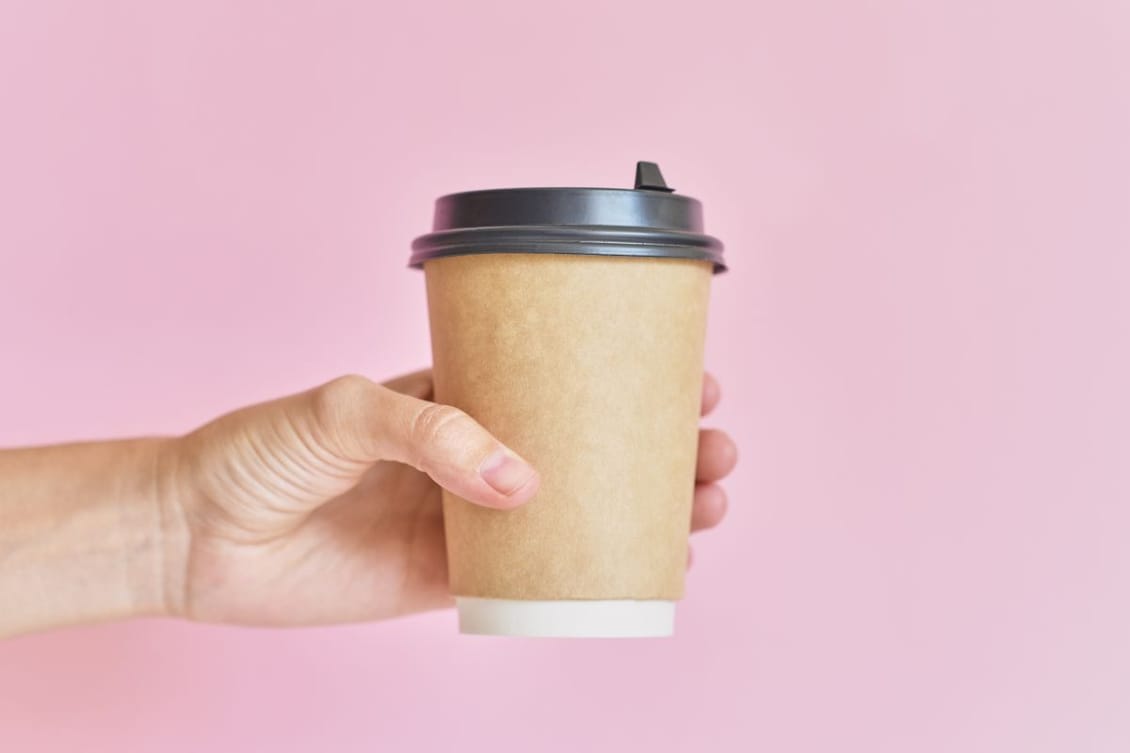
It’s small and circular and kind of bumpy. And it’s part of our everyday lives: a lid fits neatly onto the top of our takeaway coffee cups, keeping the heat in and protecting our clothes from spills.
And if we’re honest, we don’t give it as much thought as it deserves.
They’re important because in today’s world, people move around a lot. We’re on our feet, we’re at our desks, we’re hopping from bus to train and running between meetings at different locations across cities.
The coffee cup lid allows us to enjoy a coffee while we’re being bounced around on public transport, or while we’re walking along a busy street. It ensures we won’t be distracted by the spillage of burning hot liquid while we’re driving our cars. And it gives us time: time to enjoy our hot drinks slowly, sauntering along on a relaxed day off, taking in the environment around us.
This culture of movement (and specifically, of drinking coffee while we go) took root in the 1960s. By then, beverage lids were already a thing – there was a lid for cold drinks, first patented in 1934 by Roy Irvin Stubblefield. In 1950, a snap-on lid was invented by James Reifsnyder – but it didn’t have a hole to drink from, so it was for transport purposes only.
Then in 1967, Alan Frank invented a lid with a tab that could be peeled off, enabling you to drink without taking off the whole lid.
The solo traveller pucker type lid, covered by patent number 4,589,569 assigned to the Solo Cup Company on May 20th, 1986, solved a lot of problems. The user drinks from the lid, making no direct contact with the cup itself; it’s designed to avoid any face-splashes, and its protruding rim cools the coffee slightly to avoid burning (not that really good coffee should ever be hot enough to burn you, but that’s a topic for another blog post).
A depression in the centre is designed specifically for the nose: to maximise the user’s enjoyment of the coffee aroma. And a small air hole allows steam to exit the cup – so it doesn’t create a vacuum.
It’s a lot of carefully thought out design and engineering detail for an object that most of us take for granted today.

The most design-conscious among us do notice the finer details in packaging design and engineering. But most people don’t – and that’s how it should be.
Because well-engineered food packaging serves a purpose. It should be designed to maximise the user experience of the product, and to solve problems the user faces when consuming that product – not to get in between the product and the consumer and draw attention to itself.
The beauty of the coffee cup lid is that it works on a number of different levels of experience without the user even realising that their experience is being enhanced by the lid. They know the lid is stopping them from spilling the coffee – but they don’t know it’s also protecting them from burns, enhancing the aromatic experience, accommodating their upper lip in a comfortable dip, and preventing vacuum pressure.
Some of the best food and beverage packaging enhances the user’s experience without them noticing at all. We’re not against creative packaging that captures our attention (there’s absolutely a place for that); but we love products that do the job and make our days better in a quiet, unobtrusive way.
Take your seat at the InFlavour table, a government-backed and world-leading B2B food event by Tahaluf.
E-mail address SubmitWant to keep up to date with all our latest news and information? Enter your name below to be added to our mailing list.
E-mail address Submit